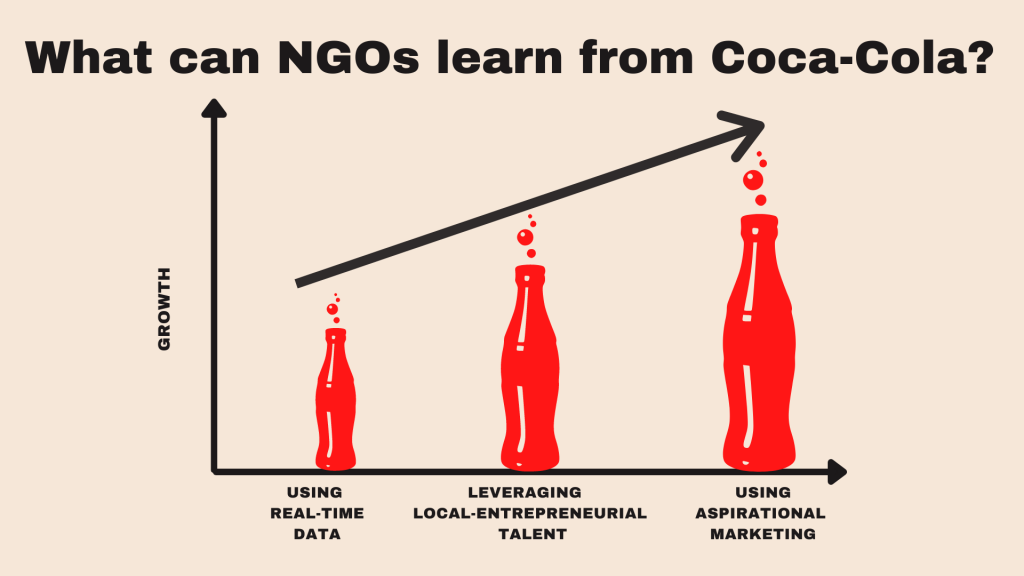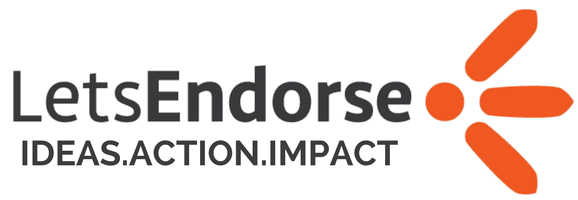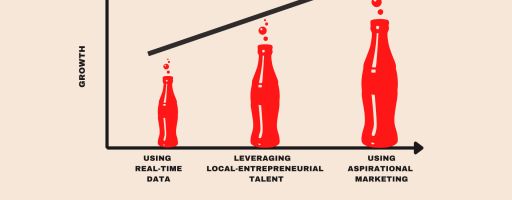Non-Governmental Organisations or Non-profits seek to improve the lives of the most disadvantaged, whilst corporations add value to society to make a profit. The challenges they encounter remain the same but their capacity and sometimes even approach to overcome them is different.

In her 2010 TED Talk [1], Melinda Gates draws some interesting parallels between how Coca-Cola reaches out to people in impoverished countries and how NGOs may do the same. Is it, however, feasible? Can for-profit business models, particularly those with a large budget, such as Coca-Cola, be used as NGO strategies?
Although sanitary napkins may not be available at every general shop in a hamlet, a coke bottle is almost always available. Coca-cola’s influence is undeniable. It has established its business on three fundamental pillars that, if adopted by non-profits, may have a huge impact. The following article
The three pillars are as follows:
- Using real-time data
- Taking use of local entrepreneurial talent
- Marketing
Analyzing Real-time data
Coca-cola uses real-time data to get input from customers, creates and adjusts its products, and brings the upgraded product into the market in no time. The timely up-gradation helps it to stay in contact with its customers.
In the nonprofit sector, data evaluation occurs after the end of the project. It’s the equivalent of shooting an arrow while blindfolded. The arrow will strike something, but whether it’ll be a bull’s eye is the question. The process of evaluating the data during the project will assist in removing the blindfold and maybe hitting the target. If the NGO’s strategy is to evaluate the data and take spontaneous actions, a lot can be solved when it needs solving.
For instance, curbing or managing Covid-19 would have been even more difficult if we had been unaware of the infected instances in real-time. Data aids in the production of vaccines, the establishment of healthcare centers, the hiring of healthcare professionals, and the distribution of medications, all of which would be impeded if data were not accessible.
Leveraging Local-Entrepreneurial Talent
Coca-Cola excels at identifying and using local entrepreneurial talent. In countries such as South Africa, Tanzania, and Uganda, they expanded sales by teaching and lending to locals and assisting them in establishing distribution networks through pushcart sellers and other means. The NGOs and governments too can deploy local talent because they are the ones directly in contact with the local population. They know what motivates the locals best.
The best example of this is the Health Expansion Program by Ethiopia. Ethiopia identified the issue of health care where they only had 1 worker for 30,000 people and it took days to reach the health care facilities. To curb this they trained 35000 locals which helped decrease the ratio to 1.5 workers for 1000 people. Health workers can help in so many ways like family planning, immunizations for children, advising women to get the right treatment on time.
Using Aspirational Marketing
The final consideration is marketing. Coca-Cola’s tremendous marketing is the reason why pushcart sellers or locals can sell every bottle in their cart. Coca-Cola’s motto “Open Happiness” enables the company to engage with many groups in diverse ways. Happiness is linked with family life in Latin America, while it is associated with fun and love in India, and they use this to connect people to the brand. People will never buy it unless they associate it with some emotion. We always misinterpret that if people need something they want something. The reality is that we need to raise wants in a person and this is not limited to consumer goods. It can be true for basic needs like access to toilets and sanitation facilities.
We understand the significance of sanitation, yet 2.3 billion people still lack access to basic sanitation, with almost 892 million people practicing open defecation. Almost 10% of women do not have access to basic services such as sanitary napkins. This may be addressed by constructing bathrooms or providing women with napkins. However, this is insufficient. People will use those toilets for purposes other than what they were designed for, and women in rural areas still feel that they are impure during their periods and are unaware of the need for personal cleanliness.
In situations like this, change requires that we connect with the community and dare we say, ‘market’ the solution. We empower them with knowledge of the importance of hygiene through narratives that are aspirational and not merely instructional. Movies like “PadMan ” and “Toilet Ek Prem Katha ” are helping spread awareness and associating these issues with the pride and respect of women. This works much better than an infomercial warning you of the ill effects of something because you start associate hygiene and sanitation access with positive traits.
Conclusion
The social sector has a lot to learn and a long way to go. It does not necessarily have the resources at the disposal of corporates that want to reach the people at the base of the pyramid. New models of creating impact that involves collaborative action and increased use of technology are shaping up and offering solutions that would not be possible earlier. The journey of transforming people’s lives is an important and beautiful one and passionate individuals are using their talents to bring these strategies to the development sector.
References
- https://www.ted.com/talks/melinda_gates_what_nonprofits_can_learn_from_coca_cola/up-next?language=en
- https://www.worldbank.org/en/topic/sanitation


